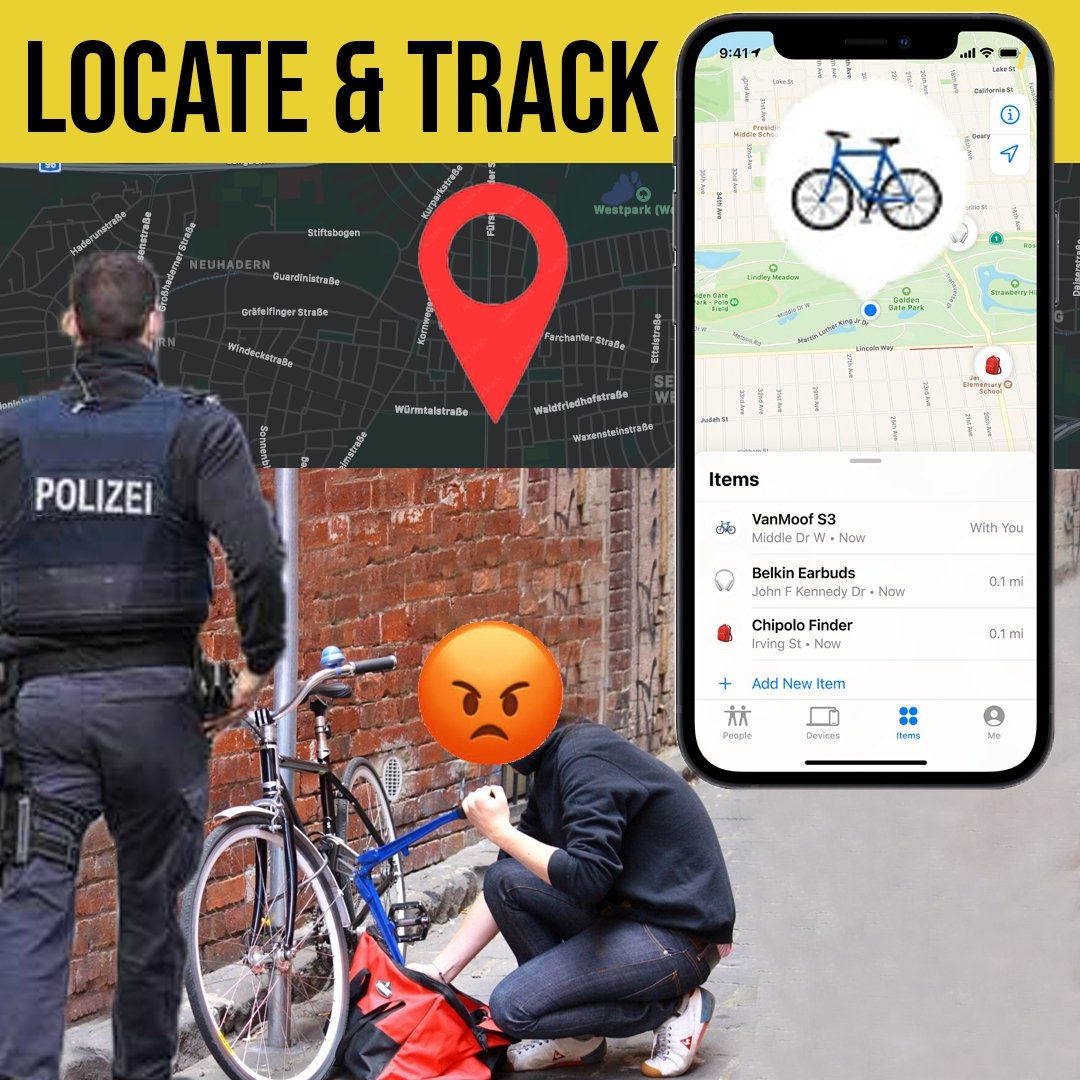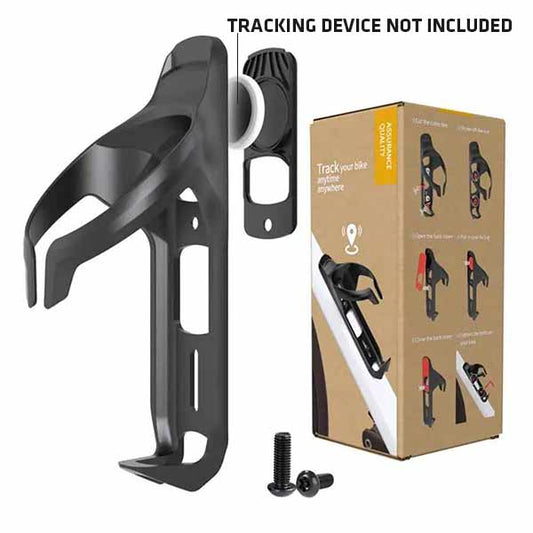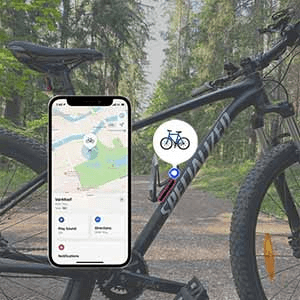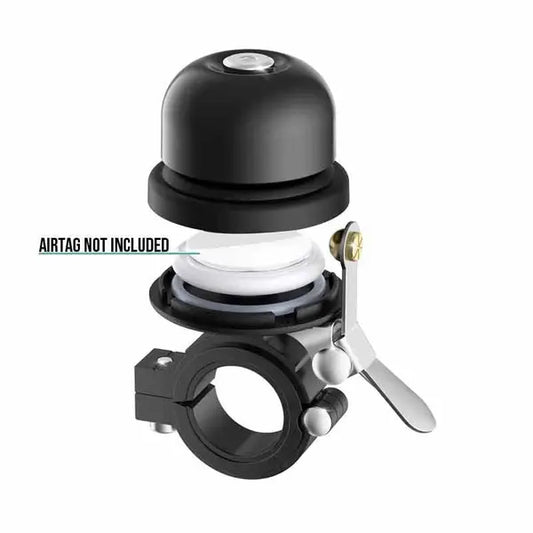Bicycle Registration in Canada and the US: Why and How to Register Your Bike
When you invest in a bicycle, you're not just purchasing a mode of transportation—you're acquiring a valuable asset that deserves protection. With bicycle theft rates continuing to climb across North American cities, registration has become an essential safeguard for cyclists of all types.
Whether you're a daily commuter, weekend warrior, or casual rider, understanding how bicycle registration works in Canada and the United States can significantly increase your chances of recovering a stolen bike and deterring theft in the first place.
Bicycle registration creates a verifiable link between you and your two-wheeled companion, providing authorities with critical information should your bike ever go missing. As bicycle theft remains a major concern, proper registration coupled with physical security measures offers the most comprehensive protection strategy available to cyclists today. As bicycle theft remains a major concern, see our guide to the Best Anti-Theft Gear for Bikers in 2025 for proactive protection ideas.
In this guide, you'll learn why registration matters, how to navigate different systems across North America, and what steps to take beyond registration to keep your bicycle secure. We'll cover both local and national registry options, helping you make informed decisions about protecting your investment for years to come.
What is bicycle registration and why should you register your bike?
Bicycle registration is an identification system that creates an official record connecting your bike to you through documentation of its unique characteristics and your ownership information. Dating back decades in North America, registration programs were originally simple paper-based systems maintained by local police departments. Today, they've evolved into sophisticated digital databases that can help track and recover stolen bikes across jurisdictional boundaries.
Registering your bike serves multiple critical purposes that benefit both individual cyclists and the broader community. The primary motivation for most riders is theft recovery—when your registered bike gets stolen, the serial number and description in the registry give law enforcement specific information to identify your property and return it to you. Many recovered bikes go unclaimed simply because owners can't prove ownership, a problem registration directly solves.
Beyond recovery, bike registry systems provide irrefutable proof of ownership—essential for insurance claims, police reports, or disputes. This documentation becomes particularly valuable when purchasing used bicycles, as checking registration status can reveal whether a seemingly great deal is actually stolen property.
Community safety also improves through widespread registration. When more cyclists participate in city bike registry programs, local authorities can identify patterns in bicycle theft, allocate appropriate resources, and potentially disrupt large-scale theft operations that target specific neighborhoods or types of bikes.
Insurance companies increasingly recognize bike registration as a responsible ownership practice, sometimes offering discounts to policyholders who register their cycles. Even when not explicitly required, having registration documentation streamlines claims processing after theft or damage.
Want to safeguard your bike after registering? Hide a tracker with the Guards Armor Bike Mount for ultimate security.
How to register your bicycle: step-by-step for Canada and the US
Registering your bike follows similar principles regardless of location, though specific requirements vary across North America. Begin by gathering essential information about your bicycle before choosing the most appropriate registry for your situation.
The first step involves locating your bike's serial number—typically found stamped on the underside of the bottom bracket (where pedal cranks meet the frame), under the seat tube, or occasionally on seat stays or head tubes.
This unique identifier serves as your bike's "fingerprint" in registration databases. If you can't locate it, check your purchase documentation or consult your local bike shop for assistance.
Once you've located the serial number, decide where to register based on your location and preferences. Options generally fall into three categories: local police departments, municipal programs, or national online databases. Local police bike registration tends to be free but might have limited search capability if your bike travels far from home. Municipal programs often connect directly with local enforcement but may require residency. National online registries like Bike Index or Project 529 Garage offer widespread coverage across jurisdictional boundaries.
When completing registration, you'll typically need:
- Bicycle serial number
- Make, model, and year of manufacture
- Color and distinguishing features
- Clear photos from multiple angles
- Proof of purchase (if available)
- Your contact information
For Canadian cyclists, registration options include both national platforms like Project 529 Garage (particularly popular in British Columbia and Ontario) and city-specific programs such as Toronto's Bike Registry or Vancouver's registration initiative. Many Canadian police departments also maintain their own bicycle registration US options similarly vary from city-specific programs in places like New York, Chicago, and San Francisco to national databases that cover the entire country.
Consider registering in multiple systems for maximum protection—a local police program plus a national online registry provides both community connection and widespread search capability if your bike crosses jurisdictional lines.
Popular bicycle registration programs and online registries
Several bicycle registration systems have emerged as leaders in North America, each offering unique advantages depending on your location and needs:
Bike Index stands out as one of the largest non-profit bicycle registration databases in North America, with hundreds of thousands of registered bikes and an impressive recovery rate. The service is free, allows registration regardless of where you purchased your bicycle, and partners with law enforcement agencies across the continent.
Project 529 Garage has gained significant traction, particularly in Canada, with strong partnerships in British Columbia and Ontario. This registry includes a recognizable shield decal that serves as a visual deterrent to potential thieves.
National Bike Registry operates throughout the United States and provides tamper-resistant ID labels along with registration in a database used by law enforcement nationwide.
For localized protection, many North American cities operate their own registration systems:
- In Canada: Toronto, Vancouver, Montreal, and Calgary maintain municipal databases
- In the United States: Chicago, San Francisco, New York, and Seattle offer city-specific registration options
Police departments frequently maintain their own registration programs, particularly in smaller communities where officers may recognize local bikes on sight. These programs often provide registration stickers that serve as both identification and visual deterrent.
College and university campuses frequently offer specialized registration for students and faculty, creating a community-focused system for areas with high bicycle usage and theft rates.
The benefits and limitations of bicycle registration
While bicycle registration offers numerous advantages, understanding its complete framework—including limitations—helps cyclists develop comprehensive protection strategies. Registration's primary strength lies in significantly improving recovery odds. When law enforcement recovers bicycles, those with registration information are much more likely to be returned to their rightful owners, while unregistered bikes often remain unclaimed in evidence facilities.
Registration acts as a deterrent in multiple ways. Visible registration stickers signal to potential thieves that the bicycle can be traced, often prompting them to seek easier targets. Additionally, many cyclists report that registration increases their awareness of proper security practices and encourages consistent use of quality locks and strategic parking.
For insurance purposes, registration documentation serves as valuable proof of ownership and specific bicycle details, streamlining claims processes after theft or damage. Some insurance providers even offer reduced premiums for registered bicycles, recognizing the reduced risk these preparations represent.
Registration also strengthens community engagement and awareness. When neighbors, local businesses, and law enforcement recognize the importance of bicycle security, collective vigilance increases. Many registration programs connect cyclists with community resources and education about theft prevention techniques.
However, registration systems do have limitations worth acknowledging. Most notably, registration programs operate independently, creating potential gaps between databases. When a bicycle is stolen in one jurisdiction and recovered in another, systems without interconnection may fail to identify registered bikes.
The voluntary nature of most registration programs means many bicycles remain unregistered, limiting overall effectiveness. Without universal adoption, the full potential of registration networks cannot be realized. Additionally, inconsistent enforcement and prioritization of bicycle theft cases by law enforcement can undermine even well-designed registration systems.
Registration alone cannot prevent theft—it must be part of a comprehensive security approach. Alongside proper locking techniques, tools like GPS trackers and AirTags are becoming essential in the battle against bike theft.
Despite these limitations, registration remains one of the most effective tools available to cyclists for recovery and theft deterrence. By understanding both strengths and weaknesses, cyclists can develop realistic expectations and comprehensive protection strategies.
Advanced bicycle security: what to do after registering
While registration creates a vital foundation for bicycle security, complementary measures significantly enhance your protection strategy. Consider registration as your recovery insurance, then build additional security layers to prevent theft in the first place.
Quality locks represent your first defense against theft.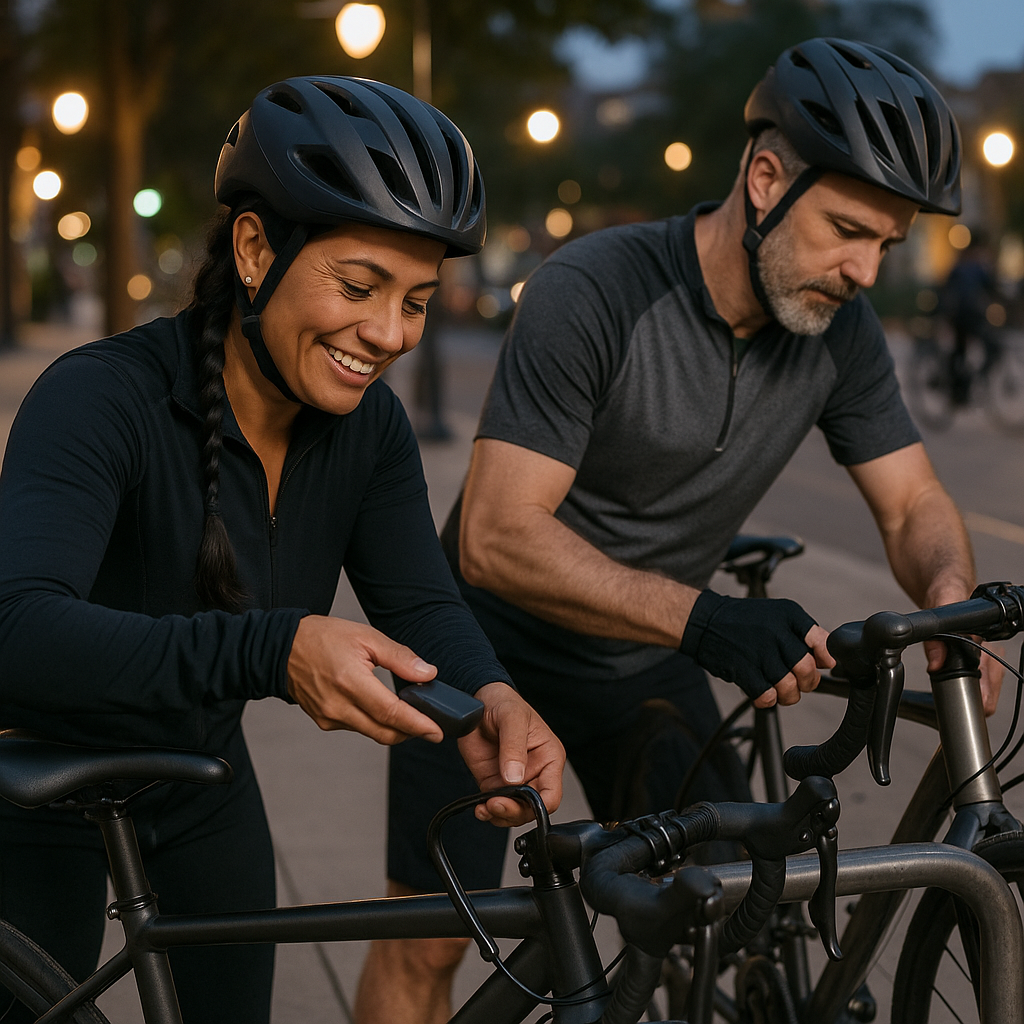
Invest in at least one U-lock made from hardened steel, supplemented with a secondary cable or chain for comprehensive coverage. The most effective locking strategy secures both wheels and the frame to an immovable object, eliminating quick-release vulnerabilities.
Strategic parking choices dramatically reduce theft risk. Always select well-lit, high-visibility locations with proper bike racks or sturdy fixtures. When possible, park among other bicycles, as thieves typically target isolated bikes first. Inside secure facilities or monitored areas provides additional protection when available.
Modern tracking technology offers unprecedented recovery capabilities when integrated with registration. GPS trackers designed specifically for bicycles provide real-time location data, while more affordable options like Bluetooth trackers and Apple AirTags offer remarkable tracking abilities within their network range. These devices can be discreetly mounted under seats, within frames, or beneath accessories where thieves are unlikely to detect them.
Personalization and identification beyond registration create additional security layers. Consider engraving your driver's license number (not personal information) in multiple discreet locations on your frame and components. Some cyclists apply unique, recognizable markings that make their bikes instantly identifiable even if thieves attempt cosmetic alterations.
Documentation supplements registration information with additional evidence of ownership. Keep digital copies of purchase receipts, warranty information, detailed photographs showing distinguishing features and modifications, and maintenance records. Store these securely in cloud storage accessible from any device if theft occurs.
Regular security assessments help identify vulnerabilities before thieves do. Evaluate how components are attached, check for quick-release mechanisms that could be replaced with secure alternatives, and consider whether aftermarket security accessories like locking skewers would benefit your specific bicycle configuration.
Enhance your registration with hidden trackers—check out the AirTag Bike Mount Case for stealth security.
Conclusion
Bicycle registration represents a crucial first step in protecting your investment from theft and increasing recovery chances should your bike go missing. The process, whether through local police departments, municipal programs, or national databases, creates a vital link between you and your bicycle that extends beyond physical possession.
Throughout Canada and the United States, registration options continue expanding to meet cyclists' needs, though the landscape remains somewhat fragmented across jurisdictions. This reality underscores the importance of selecting appropriate registration platforms for your specific situation and geographic area, potentially utilizing multiple systems for comprehensive coverage.
While registration significantly improves recovery odds and provides valuable documentation for insurance and ownership verification, its effectiveness multiplies when combined with physical security measures, strategic parking practices, and modern tracking technology. The most protected bicycles benefit from this layered approach to security.
Taking action today—registering your bicycle, implementing physical security measures, and considering tracking options—provides immediate peace of mind and long-term protection for your cycling investment. Remember that comprehensive security isn't about implementing a single perfect solution but rather creating multiple barriers that collectively discourage theft and maximize recovery potential.
Your bicycle represents not just a financial investment but also personal freedom, environmental commitment, and often an emotional connection. Taking thoughtful steps to protect it through registration and complementary security measures ensures you'll enjoy those benefits for years to come.
Frequently asked questions
Is bicycle registration required by law in Canada or the US?
In most locations, registration is voluntary, but some US and Canadian cities have mandatory registration for local cycling.
What information do I need to register my bike?
Usually your bike's serial number, make, model, color, a photo, and your contact details.
Can bicycle registration help recover a stolen bike?
Yes. Registration increases the chances of recovering a stolen bike by helping law enforcement and registries identify ownership.
What's the best online registry for Canadian or US cyclists?
Nationally recognized programs like Bike Index, or local options like Project 529 Garage, are leading choices.
Can I register my bike if I lost the original purchase receipt?
Yes; most registries only require your contact info and the serial number, but adding receipts/photos helps prove ownership if needed.
